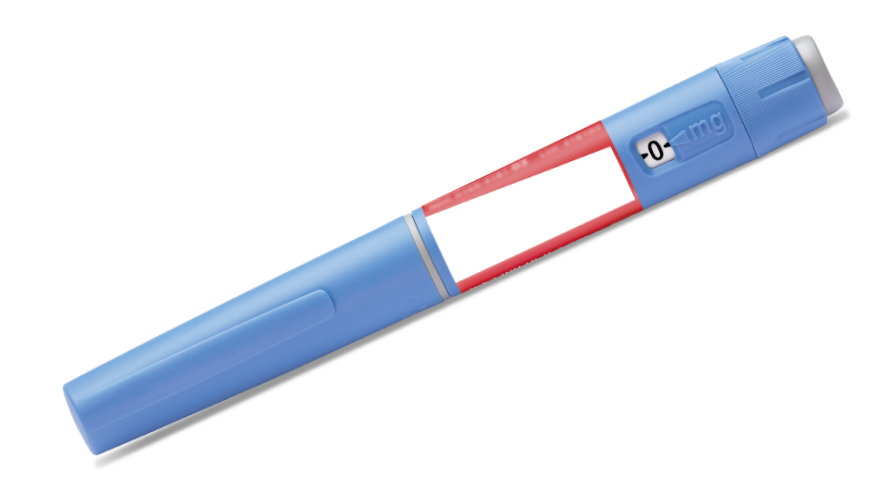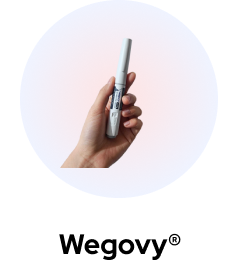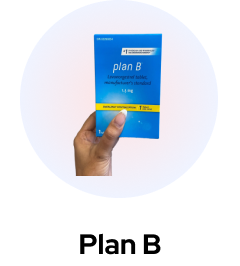This article investigates these drugs and looks into which delivers superior weight loss outcomes. We cover:
- What Saxenda is
- What Ozempic is
- The main differences between the two drugs
- How effective Saxenda is vs. Ozempic
- Whether or not you can take the two drugs together
- Which drug is better for weight management
- Frequently asked questions.
Read on to learn more!
What Is Saxenda?
Saxenda is the brand name for liraglutide. It works by mimicking the glucagon-like peptide-1 (GLP-1) receptor agonist produced by the pancreas. This receptor agonist regulates blood sugar levels, and so Saxenda is ideal for treatment of individuals with type-2 diabetes.
As well as assisting with blood sugar management, the drug is also associated with weight management. This is thanks to its ability to alter the signals sent to the brain around appetite and satiety. This leads to reduced caloric intake, change in behavior around eating, and ultimately better weight management.
Saxenda is administered by a pre-dosed injection pen.
What Is Ozempic?
Ozempic is the brand name for the drug semaglutide, and is also a GLP-1 receptor agonist. Though its primary use is in the treatment of type-2 diabetes, it has been found to demonstrate promising results in weight management for people with obesity. It has also been shown to reduce the risk of major cardiovascular events, including heart attack, stroke, and death.
Because Ozempic mimics the GLP-1 hormone, it helps to control blood sugar levels and delays gastric emptying, which aids in weight management.
Ozempic is also delivered via a pre-dosed injection pen, and is taken once a week subcutaneously.
Difference Between Saxenda and Ozempic
The main difference between the two drugs are their active ingredients, but there are also differences when it comes to dosing and effectiveness.
Here, we break down the most important differences for you.
Active Ingredients
While both medications belong to the GLP-1 receptor agonist group, they differentiate when it comes to their active ingredients.
Saxenda employs liraglutide, while Ozempic uses semaglutide. Although both mimic the action of the GLP-1 hormone, their differences can lead to distinct efficacy and side effect profiles.
Semaglutide and liraglutide, although both GLP-1 agonists, have different chemical structures, resulting in slightly different pharmacological characteristics.
For instance, semaglutide has a longer half-life, which allows for once-weekly dosing. In contrast, liraglutide needs to be taken daily.
Both medications are only approved for use in adults and are not suitable for children.
Clinical Trials
In terms of efficacy, a study that examined the effect of liraglutide vs. semaglutide in obese individuals without diabetes found that semaglutide yields superior outcomes compared to liraglutide.
In the review, participants treated with semaglutide lost an average of 15.3% of their body weight, compared to a 7.8% loss in the liraglutide group (p=0.02).
Another small clinical trial that evaluated the effectiveness of semaglutide also found that Ozempic demonstrates promising results in preventing multiple heart disease risk factors when compared to a placebo. Heart disease is associated with high blood pressure, cholesterol, and triglycerides, all of which were lowered.
Common Side Effects
Both Ozempic and Saxenda carry a risk of side effects, mainly gastrointestinal problems. These include:
- Nausea
- Diarrhea
- Stomach pain
- Vomiting
- Constipation
Commonly listed side effects in Saxenda also include low blood sugar (hypoglycemia), but this is not a common side effect for Ozempic.
Both Saxenda and Ozempic should not be taken by those with a family history of thyroid cancer, as GLP-1 receptor agonists have shown some evidence of increasing the chance of these tumors in animal trials. They are also not recommended for those with a history of pancreatitis.
Healthcare Providers
Your medical team should assess your individual conditions, risk factors, BMI, and other health information before prescribing either medication. Their advice and prescription choice will determine whether Saxenda or Ozempic shows greater benefits than the other for you.
Patients should be sure to fully disclose their medical history and any prescription medication they’re currently taking, as this will all need to be taken into consideration.
GLP-1 Receptor Agonists
Both Saxenda and Ozempic are GLP-1 receptor agonists, which work by mimicking the function of the GLP-1 hormone. This hormone plays an important role in controlling blood sugar and appetite.
Let’s explore how they work:
- When you eat, your body’s blood sugar levels rise. In response, your intestines secrete GLP-1. This binds to beta cells in your pancreas, stimulating it to produce insulin. This lowers your blood sugar levels.
- GLP-1 also sends a signal to your brain to create a feeling of satiety, which reduces appetite and slows the rate at which your stomach empties. This means that the glucose from your food enters your bloodstream more slowly.
- Both of these combined result in fewer blood sugar spikes and reduced appetite.
Effectiveness of Saxenda vs. Ozempic
When comparing Saxenda and Ozempic, studies indicate that both medications can assist with weight management when combined with healthy food and exercise. However, Ozempic may have superior results.
A study compared the weight loss effects of semaglutide (the active ingredient in Ozempic) and liraglutide (the active ingredient in Saxenda). It found that semaglutide is more effective than liraglutide, and participants lost more than twice the weight of those using liraglutide.
This is a statistically significant result (p=0.02) and strongly indicates that semaglutide produces better results than liraglutide.
However, the effectiveness of each medication can range widely among individuals. Results depend on various factors such as dosage, adherence to the medication regimen, lifestyle changes (including diet and exercise), and individual physiological responses.
Weight Loss Medications
As well as Saxenda and Ozempic, there are several other similar weight loss medications on the market. These include:
This is another form of the drug semaglutide, and is also taken via injection. It is very similar to Ozempic, but is marketed specifically for weight management instead of diabetes control.
This is an oral form of semaglutide, and is taken daily. It works in the same way as Ozempic, but is available in lower equivalent doses.
This drug is the brand name for dulaglutide and is also a GLP-1 receptor agonist. It is designed as a treatment to improve blood sugar control in adults with type 2 diabetes and is administered once weekly via subcutaneous injection.
Can You Take Ozempic and Saxenda Together?
Because both these medications work via the same mechanism as GLP-1 receptor agonists, it is not recommended to take them together. Doing so may cause more side effects, or other adverse reactions.
If you are taking one and are not getting the results you want, talk to your medical team. You may need to increase your dose, or reappraise your lifestyle intervention measures.
Which Is Better for Weight Loss — Saxenda or Ozempic?
Although both have weight loss potential, studies suggest that Ozempic provides better weight loss outcomes than Saxenda.
Despite this, be sure to talk to your medical team about which medication may be better suited for you — they can analyze your individual needs and risk factors and gauge which drug would be recommended over the other.
Key Takeaways
Saxenda (liraglutide) and Ozempic (semaglutide) are both GLP-1 receptor agonists that were designed for diabetes control but have been found to be extremely useful tools for weight management.
GLP-1 receptor agonists work by mimicking the action of GLP-1, a hormone responsible for regulating appetite and managing blood sugar. This slows gastric emptying and reduces appetite, which can lead to improved weight management.
While both Saxenda and Ozempic have been shown to be effective in clinical trials, Saxenda is less effective than Ozempic.
There are a number of common side effects of both drugs which patients may experience. Symptoms include nausea, diarrhea, constipation, and abdominal pain. These drugs may also increase the risk of thyroid C-cell cancer, and is contraindicated for anyone with a family history of this disease.
There are other GLP-1 receptor agonist weight loss drugs on the market, including Wegovy, Rybelsus and Trulicity. They all work in the same manner, although they have different dosing and administration methods.
Remember, it’s important to consult with your medical team before starting any drug for weight management to understand its potential benefits and risks, as well as to monitor progress and manage any side effects or concerns. Weight management drugs need to be combined with a balanced diet and increased activity in order to be successful.
Frequently Asked Questions (FAQs)
How do Saxenda and Ozempic differ in terms of administration?
While both treatments are injected, Ozempic is injected once weekly, while Saxenda is injected once daily. The injections are subcutaneous (under the skin into the fatty layer of tissue) and the injection site can be in the abdomen, thigh, or arm.
Can Saxenda or Ozempic interact with other medications?
Yes, Saxenda and Ozempic may interact with other medications. The main risk of interaction is with medications that lower blood sugar, such as insulin or sulfonylureas. This can lead to a risk of hypoglycemia.
Another issue to be aware of is the risk of impacted medication absorption due to the slowed gastric emptying. If you’re taking any other medications, make sure you talk to your medical team before starting Ozempic or Saxenda.
Are Saxenda and Ozempic covered by insurance?
This varies hugely depending on your insurance plan and your health needs. It’s recommended you talk to your medical team and insurance provider to find out what is covered under your plan and what isn’t.













 (US)
(US)